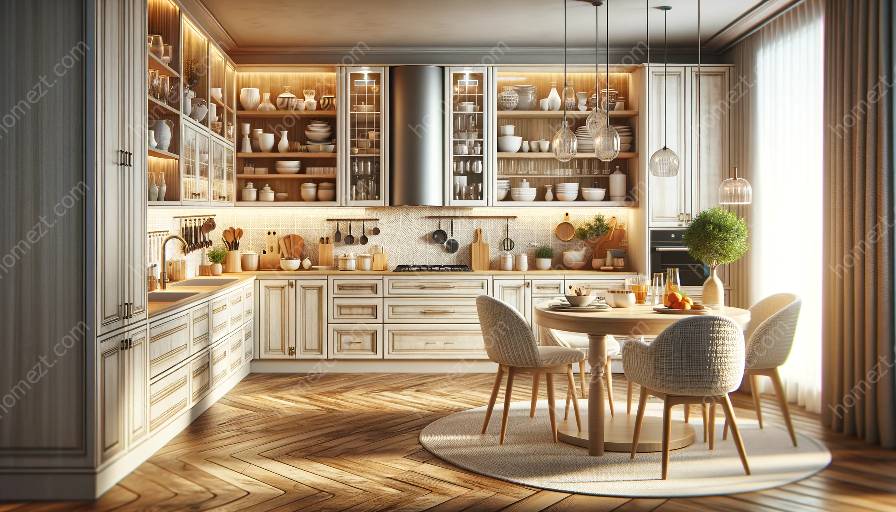When it comes to remodeling or building a new kitchen, one of the most significant investments is kitchen cabinets. Understanding the budgeting and pricing aspect is crucial to make informed decisions that align with your needs and preferences. In this comprehensive guide, we will explore the factors that impact the cost of kitchen cabinets, budgeting considerations, and tips for managing the pricing effectively.
Factors Affecting Cabinet Pricing
Before delving into budgeting, it's essential to understand the various factors that contribute to the overall pricing of kitchen cabinets. These factors can significantly impact the total cost and play a crucial role in decision-making.
- Materials: The type of materials used for the cabinets, such as solid wood, MDF, plywood, or particleboard, can influence the pricing. Solid wood cabinets are generally more expensive than those made from engineered wood products.
- Construction and Design: Intricate designs, customizations, and specialized construction techniques can add to the overall cost. Cabinets with advanced features like soft-close hinges, pull-out shelves, and custom finishes are priced higher than standard options.
- Hardware and Accessories: The quality and quantity of hardware and accessories, such as handles, knobs, and drawer slides, can impact the pricing. High-end hardware and accessories contribute to a higher cost.
- Finish and Style: The choice of finish, whether it's stained, painted, or laminated, and the specific style of the cabinets can influence the pricing. Custom finishes and intricate details may increase the overall cost.
- Size and Configuration: The size of the kitchen, the number of cabinets needed, and the specific configuration influence the pricing. Larger kitchens and unique cabinet layouts can result in higher costs.
Budgeting for Kitchen Cabinets
Developing a realistic budget for kitchen cabinets involves a comprehensive understanding of your requirements, the available options, and cost-effective strategies. When creating a budget, consider the following key aspects:
- Assess Your Needs: Determine your storage needs, preferred style, and any specific design elements you desire. Understanding your requirements will help in allocating the budget effectively.
- Research Pricing: Explore the pricing of different cabinet materials, styles, and finishes. Compare quotes from multiple suppliers and consider the value offered in terms of quality and features.
- Allocate Funds Wisely: Set aside a realistic amount for the cabinets based on the overall kitchen renovation budget. Consider allocating a higher percentage of the budget to the cabinets, as they are a major focal point of the kitchen.
- Consider Long-Term Value: When budgeting, focus on the long-term value and durability of the cabinets. While upfront costs are important, assessing the quality and longevity of the cabinets is essential for a cost-effective investment.
- Factor in Installation and Additional Costs: Remember to include the costs associated with professional installation, delivery, and any additional features or modifications needed for the cabinets when creating the budget.
Managing Cabinet Pricing Effectively
Once the budget is established, it's crucial to manage the pricing effectively to ensure that you maximize the value of your investment. Consider the following tips for managing cabinet pricing:
- Optimize Materials: Work with your supplier to find a balance between quality and cost. Explore options for cost-effective materials that align with your design preferences while meeting quality standards.
- Focus on Essential Features: Prioritize essential features that enhance functionality and durability. Avoid overspending on unnecessary customizations or accessories that may not significantly impact the usability of the cabinets.
- Seek Professional Guidance: Consult with experienced designers or contractors to understand cost-effective design and construction options. Their expertise can help in making informed choices that align with your budget.
- Explore Financing Options: Investigate financing or payment plans that can make it easier to afford higher-quality cabinets. Many suppliers offer flexible financing options to accommodate different budgetary needs.
- Negotiate and Compare: Don't hesitate to negotiate pricing with different suppliers and explore their willingness to match or beat competitors' offers. Comparing quotes and negotiating effectively can result in significant cost savings.

